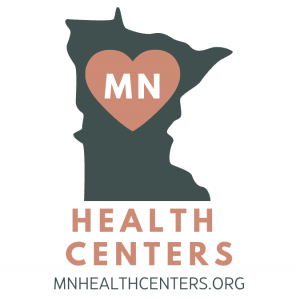Minnesota Community Health Centers: Proudly Serving Communities Across the State
Thank you to the Minnesota Legislature, the HHS Policy and Finance Working Group, and the Governor for this historic investment in Community Health Centers.
ST. PAUL, MN, UNITED STATES, June 10, 2025 /EINPresswire.com/ -- We are grateful to the Minnesota Legislature, members of the HHS Policy and Finance Working Group, and the Governor for investing in Minnesota’s Community Health Centers as part of the 2025 Special Session.Minnesota’s Community Health Centers are committed to ensuring that every individual across Minnesota - regardless of their background or the challenges they face - has access to high-quality, affordable, and compassionate healthcare.
The Minnesota Association of Community Health Centers (MNACHC) represents the state’s 17 Community Health Centers (CHCs), which have been deeply rooted in the neighborhoods they have served for over 60 years. Community Health Centers provide comprehensive, preventive healthcare to over 170,000 patients annually across urban, rural, and Tribal communities, serving as a lifeline to those who may otherwise go without care.
Minnesota’s Community Health Centers believe that strong communities start with good health. Community Health Centers don’t just treat illness- they address factors that influence wellness. Minnesota’s Community Health Centers offer comprehensive, person-centered primary care services, including behavioral health services, substance use disorder treatment, dental care, food access, and transportation, to all individuals regardless of income, insurance status, language, or background.
At a time when poor health outcomes persist across our state, MN Community Health Centers focus on bridging healthcare gaps and building trust with patients. Community Health Centers are staffed by dedicated professionals who live in and reflect the communities they serve and understand the unique needs and strengths of their patients.
The Minnesota Association of Community Health Centers remains committed to advocating for policies and resources that allow us to expand our reach, improve outcomes, and prevent disease. Together, we are building a healthier Minnesota—one State, one community, and one patient at a time.
Visit Minnesota Association of Community Health Centers for more information about our work, or Minnesota Community Health Centers to find a community health center near you.
About the Minnesota Association of Community Health Centers (MNACHC): Established in 1996, the MNACHC serves as the leading statewide voice for Minnesota’s Community Health Centers, advocating for health care access for the medically underserved across the state.
Rochelle Westlund
Minnesota Association of Community Health Centers
email us here
Visit us on social media:
LinkedIn
Facebook
X
Legal Disclaimer:
EIN Presswire provides this news content "as is" without warranty of any kind. We do not accept any responsibility or liability for the accuracy, content, images, videos, licenses, completeness, legality, or reliability of the information contained in this article. If you have any complaints or copyright issues related to this article, kindly contact the author above.
LAIA Celebrates 10 Years of Empowering Communities Through Immigration Document Preparation
VETS2INDUSTRY Teams Up with Signal Health Group and Defenders Gateway to Support Transitioning Veterans
Free Community Health Fair Brings Comprehensive Wellness Services to Local Residents
Kalendarium
Więcej ważnych informacji
 Jedynka Newserii
Jedynka Newserii

 Jedynka Newserii
Jedynka Newserii

Handel

Ważą się losy wymiany handlowej między Stanami Zjednoczonymi a Unią Europejską. Na wysokich cłach stracą obie strony
Komisja Europejska przedstawiła w poniedziałek propozycję ceł na import z USA o wartości 72 mld euro, co ma być odpowiedzią na nałożenie 30-proc. stawek na import z UE zapowiedziane przez Amerykanów w poprzednim tygodniu. Przedstawiciele KE wciąż widzą jednak potencjał kontynuowania negocjacji. Zdaniem europosła Michała Koboski brak porozumienia lub uzgodnienie stawek wyższych niż 10-proc. nie tylko zaszkodzi obydwu stronom, ale i osłabi ich pozycję na arenie międzynarodowej.
Handel
Nie tylko konsumenci starają się kupować bardziej odpowiedzialne. Część firm już stawia na to mocny nacisk

Kwestie równoważonych zakupów stają się elementem strategii ESG. Dostawy energii, zamówienia surowców i materiałów do produkcji czy elementów wyposażenia biur – na każdym etapie swoich zakupów firmy mogą dziś decydować między opcjami bardziej i mniej zrównoważonymi. Dotyczy to także zamówień rzeczy codziennego użytku dla pracowników czy środków czystości – wskazują eksperci Lyreco, e-sklepu, który prowadzi sprzedaż produktów do biur, pokazując ich wpływ na środowisko czy efektywność pracy.
Prawo
Unia Europejska wzmacnia ochronę najmłodszych. Parlament Europejski chce, by test praw dziecka był nowym standardem w legislacji

Parlament Europejski chciałby tzw. testu praw dziecka dla każdego aktu prawnego wychodzącego z Komisji Europejskiej. – Każda nowa legislacja Unii Europejskiej powinna być sprawdzana pod kątem wpływu na prawa dziecka – zapowiada Ewa Kopacz, wiceprzewodnicząca PE. Jak podkreśla, głos dzieci jest coraz lepiej słyszalny w UE i jej różnych politykach. Same dzieci wskazują na ważne dla siebie kwestie, którymi UE powinna się zajmować. Wśród nich są wyzwania w obszarze cyfrowym i edukacyjnym.
Partner serwisu
Szkolenia

Akademia Newserii
Akademia Newserii to projekt, w ramach którego najlepsi polscy dziennikarze biznesowi, giełdowi oraz lifestylowi, a także szkoleniowcy z wieloletnim doświadczeniem dzielą się swoją wiedzą nt. pracy z mediami.








.gif)

 |
| |
| |
|